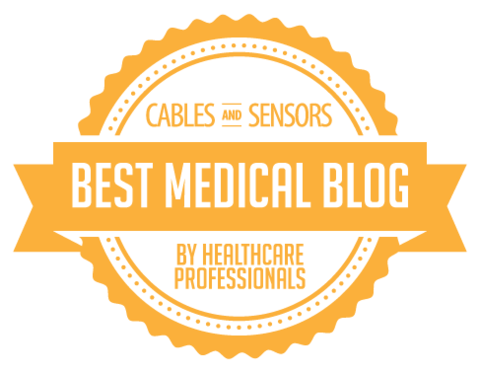Heart Health – Take Control of Your Health
Special Report – Article Excerpt:
Stop Wasting Money – Take Control of Your Health
Ensure your success with lowering
cholesterol, controlling high blood pressure,
and weight loss by knowing how to achieve change.
Did you come across a treadmill for a great discount price and decide – I need to exercise more; I’m not going to find a better price, why not? So, you now have this piece of equipment in a corner of your living room or bedroom collecting dust or acting as an expensive clothes rack.
Why is it that your good intentions led no where? Sure, that first week or two you hopped on several times, but then your progress came to a screeching halt. Well, you may not have had everything in place to be successful. You need to make sure all your “ducks are in a row” to ensure your success. If you jump from Contemplation into Action you are skipping the critical Preparation phase. Huh? You will begin to understand what I mean as you read on.
For the purpose of this article, I will focus on the critical action step. The goal I use is increasing physical activity. You can use the Stages of Change model to work on any area you are trying to change, such as eating habits to lose weight, lowering cholesterol levels, and/or controlling high blood pressure.
The Stages of Change model was first developed by psychologists James Prochaska and Carlo DiClemente in the late 1970’s. They focused on changing addictive behaviors, specifically smoking. The Stages of Change model identifies the phases we go through when we change our habits. The five stages are called – 1. Pre-contemplation, 2. Contemplation, 3. Preparation, 4. Action and 5. Maintenance. Tailoring your actions based on the stage you are in will propel you forward.
No need to waste time dwelling on the science behind the method. Just know it has been proven a useful tool. Now, let’s dive into how you can use it to your benefit.
In this stage you are performing the behavior regularly, but for less than 6 months. This means you have established a plan of action and have implemented that plan. You are actively modifying your behaviors, experiences, and environment to overcome obstacles and achieve success. The action phase is the most difficult and requires a considerable commitment of time and energy. Change does not happen overnight. It will take persistence for a new behavior to become an established habit.
The following four strategies are used to move through this stage of change:
Counter-conditioning
Substitute alternate positive behaviors for the negative behavior. It can take up to 30 days for a new behavior to become a habit. Be aware of this and put safety guards in place. Stick with your action plan and continue to replace old sedentary behaviors with new physically active ones. You may feel some loss. You actually miss your old behaviors. These behaviors are like old friends you felt comfortable with and change moves you out of your comfort zone. Review your reasons for wanting to be physically active and the long-term benefits you will gain if you stick with your plan.
Reinforcement Management
Change the events that determine or sustain the problem behavior. Reward yourself for achieving your goals, such as a new outfit, book, or running shoes. Recognize your progress and reward yourself. This will provide you with an incentive to stick with your new plan.
Helping Relationships
Turn to your support system. Don’t get overconfident and think you do not need family and friends behind you. Keep them in the loop with the progress you’ve made and identify new ways they can help you move towards your goals. Now is a time to consider signing a “contract” with yourself to reinforce your commitment to change. Have your family and friends be witnesses!
Stimulus Control
Be aware of triggers for reverting to your old habits. What safety mechanisms can you put in place to negate these triggers? Start replacing old behavior triggers with something positive. For example, place your goals where you will see them daily – like the refrigerator. Keep gym shoes by the front door. Create reminders at work, such as tennis shoes under your desk for a lunch time walk. Always be on the lookout for stumbling blocks and be prepared to brainstorm ways to overcome the hurdles.
You are doing great! Maintenance is just around the corner.
Bottom Line:
During the action phase, you make your goals a reality. Now is not a time to get cocky. Hurdles will frequently pop up and you need to be ready with strategies to overcome them. You will have some bad weeks. Step back, evaluate what is keeping you from regular activity, and figure out a solution. It may take some trial and error before you find the right solution for you. Now about that treadmill – you have it and it is dust-free!
Tackling change is hard and determining exactly what steps you need to take can be confusing. By recognizing that change has identifiable steps and strategies, you can use this knowledge to move forward and achieve your goals!
All the best,
Lisa Nelson RD
Be Heart Healthy and Lose Weight
Heart Health Success Recognition
I was recognized this month by Constant Contact as a business with a successful email marketing campaign. Here’s the write up:
Email Marketing Success Story
Healthy and Happy Readers: A Constant Contact customer discusses the value of editorial planning
eNutritionServices
List Size: 725
Open Rate: 35%
Website: https://www.lisanelsonrd.com
Ask Lisa Nelson and she’ll tell you she was “blessed with crummy genetics”: Her family has a strong history of heart disease and she has a personal cholesterol level that has hovered around 200 since her early twenties. Both factors inspired Lisa, a registered nutritionist, to start her own business, eNutritionServices, which empowers people to take the necessary steps to promote a long, heart-healthy life. Since June 2007, she has provided guidance on how to lower cholesterol and blood pressure naturally and lose weight in a healthy way. Clients receive education, support, and coaching via Lisa’s Heart of Health email newsletter, online courses, special reports, and online coaching.
The Heart of Health email newsletter began in May 2008. Each issue features an article about one of three distinct topics — cholesterol, blood pressure, or weight loss — but in an effort to include all interested readers, Lisa also includes a “Take Action” section with tips on another of the subjects. For example, if the feature article is about cholesterol, the action tip might be about weight loss. “To stay on track, I have an electronic schedule outlining my newsletter topics several months in advance,” Lisa explains. In every issue, Lisa also asks readers for feedback about their biggest health struggles, and takes advantage of the opportunity to better connect with her readers by sending a personal email directing the person to an article or product that addresses his or her concern.
By redirecting traffic from her newsletter to her website and following the click-through rates, Lisa is able to see which specific items readers are most interested in. She can then rotate the products/services she offers on the site appropriately, and can also tailor the newsletter to better suit her readers’ interests. In addition, she leverages the newsletter to collaborate with colleagues on joint ventures, and has used the newsletter to gain greater exposure for her business. For example, she now writes an “Ask the Expert” column for another health website, and even uses the questions she’s asked there to generate articles for her own newsletter. These results have made Lisa optimistic about eNutritionServices’ future prospects: “I trust email marketing will lead me to the successful online practice I am working towards,” she says.
All the Best,
Lisa Nelson RD
Blog Catalog Submission
Bookmark this blog!
Blog Top List
Lower Cholesterol – Include rich sources of omega 3 fatty acids in your diet everyday.
The list of benefits associated with omega 3 fatty acids continues to grow. By increasing your intake of omega 3 fatty acids you’ll decrease triglycerides, reduce blood pressure, increase HDL cholesterol, reduce arterial wall inflammation, and the list goes on.
Here are a few steps you can take to increase your omega 3 intake:
1. Eat fish at least twice a week.
2. Add ground flaxseed to foods.
3. Take a fish oil or flaxseed oil supplement. (Discuss all supplements with your MD.)
4. Snack on nuts and seeds rich in omega 3’s, such as walnuts.
All the best,
Lisa Nelson RD
eNutritionServices





